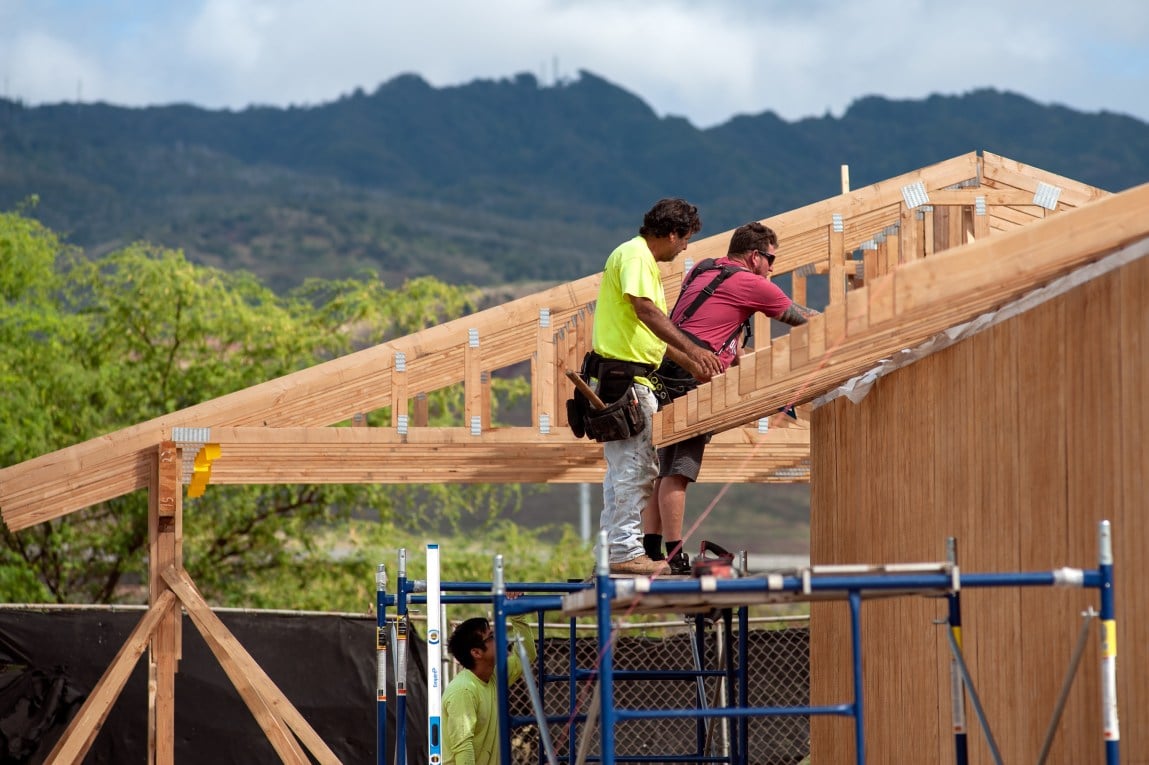When Hawaii lawmakers moved this month to pump $600 million into the state’s Native Hawaiian homesteading program, they said they wanted to help those who are most in need. The problem: They didn’t say whom, exactly, they had in mind.
Now, the state Department of Hawaiian Home Lands, the agency that oversees the long-troubled program, faces the difficult task of setting priorities and crafting a plan for how to spend the single largest injection of funds in the history of the century-old initiative. Under the program, anyone who is at least 50% Native Hawaiian is entitled to lease land for $1 a year and to either build or buy a home there. DHHL officials could use the new appropriation for a variety of measures, from developing residential lots to acquiring land to offering mortgage and rental subsidies.
At issue is how to help two different groups languishing on a waitlist of nearly 29,000 people. One is made up of Native Hawaiians who can afford a home but face a long line for DHHL housing. The other is made up of those who can’t.
In 2020, the Honolulu Star-Advertiser and ProPublica found that the homesteading program was leaving behind thousands of low-income beneficiaries in that second category, in part because DHHL was developing new subdivision housing that was too expensive for them to afford. The average price was $300,000 to $400,000.
In positioning the $600 million bill for final passage, legislators amended it to give DHHL greater flexibility in deciding how to spend the money, including deleting a provision that allocated the bulk of funding to 17 planned projects totaling about 3,000 lots — a provision that would have helped those ready to purchase units that had yet to be built.
Legislators said they gave the agency more latitude so it could better address the wide range of needs and preferences of people on the waitlist. “DHHL is in a better position to do that, not the Legislature,” House Speaker Scott Saiki said.
For its part, DHHL said it is reviewing legislative reports and testimony, including written comments from beneficiaries. “Our goal is to signal to the community what implementation will look like as soon as possible,” department spokesperson Cedric Duarte said.
Gov. David Ige is expected to sign the $600 million legislation, and the department has until Dec. 10 to submit a spending plan. But because Ige’s term ends in December, implementation will fall to the next administration.
Native Hawaiians are not waiting though.
Leaders of the two largest beneficiary organizations said they do not trust the department, which has been blasted by federal and state watchdogs for mismanagement over the years, to craft an effective plan. Those groups, the Sovereign Council of Hawaiian Homestead Associations and the Association of Hawaiians for Homestead Lands, have teamed up to develop their own. The spending roadmap, those leaders say, must be developed by the people who own the land trust, have suffered from the long waits for homesteads and will be directly affected by how the money is used.
“It’s time for nonbeneficiaries to mind their manners and sit down,” Robin Danner, chair of the council, said in an interview. “We beneficiaries are taking responsibility.”
This month, the two groups held the first of a series of meetings to gather feedback from beneficiaries. And if early conversations are any indication, the organizations will have to reconcile divergent views among Native Hawaiians. Some say any financial aid should first go to those on the waitlist who otherwise cannot afford to purchase a home.
Oahu beneficiary Gregory Ah Yat, who turns 70 in August, has been a renter all his adult life. He has been on the waitlist since the late 1980s and passed on several potential lease offerings over the years because he couldn’t afford them. He favors DHHL providing need-based aid. “I know some people will still grumble, but that’s the purpose of the help,” he said.
The legislation does permit DHHL to use an applicant’s income to set priorities on who to help, and it authorizes the department to provide down-payment, mortgage and rental subsidies to waitlisters, though the department must first establish guidelines for such assistance.
But others think help should be offered uniformly, based strictly on an applicant’s position on the waitlist. They want to see the money used to develop more housing, which typically costs the program’s beneficiaries roughly half the market price because they are not paying for the land — a valuable benefit in a state with one of the hottest real estate markets in the country.
Liberta Hussey-Albao, 78, said she first applied for a homestead in the 1970s and remains on the Kauai waitlist even though she owns a home there. Hussey-Albao wants the homestead for her adult son, who also lives on Kauai but is not a homeowner and doesn’t meet the blood-level requirement to be on the waitlist; beneficiaries must be at least 50% Native Hawaiian.
If DHHL bases financial assistance on need, some applicants who have waited decades for a homestead will be passed over, depriving them of something they are entitled to, according to Hussey-Albao. “Let’s be fair,” she said. “Those on the top of the list are old and dying.”
Either way, policymakers have another key factor to consider: a tight deadline. The legislation requires DHHL to allocate the $600 million by June 30, 2025; any remaining money must be returned to the state’s general fund. “If even $1 of this lapses because it went unused, I think that will be a disaster,” said state Sen. Jarrett Keohokalole, co-chair of the Legislature’s Native Hawaiian caucus. “Maybe there’s some hyperbole there, but you get what I’m trying to say.”


















